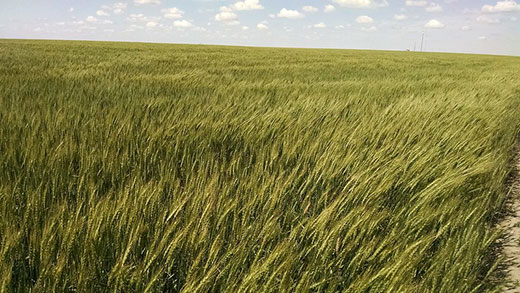September is a busy month for Kansas producers, who are making final selections for wheat varieties, prepping equipment and spraying volunteer wheat and weeds ahead of planting this year’s wheat crop. K-State Agronomy recently released guidance on one other action that could help save some cost and set the 2023 wheat harvest up for success from day one — soil sampling.
In a K-State Agronomy eUpdate on August 25, Nutrient Management Specialist Dorivar Ruiz Diaz noted soil sampling “is particularly important with higher fertilizer prices contributing to very tight margins for wheat.”
Ruiz Diaz wrote, “Accurate decisions are especially important during years with low grain prices and tight budgets. Furthermore, after variable conditions and yield levels across the state, fertilizer needs may require adjustments based on soil test…Now is the time to get those samples taken, to ensure there will be enough time to consider those test results when planning your fall fertilizer programs.”
Producers should plan for 10 to 20 soil samples per field for an accurate measure of nutrients throughout the field, rather than applying nutrients based on sampling in only a small area. While the specific soil tests producers should order depend on location, application methods and level of tillage, the most common nutrients to which wheat shows good responses are nitrogen (N) and phosphorus (P) with low soil pH rounding out “the Big 3.” However, in Kansas, sulfur and chloride deficiencies are becoming more common.
Producers can opt for one of two standard soil samples — 0-6 inches and 0-24 inches. The standard 0-6 inch sample helps test for nutrients Phosphorus and potassium (K), both of which are buffered processes in Kansas soils. According to Ruiz Diaz, “This simply means that the soil contains significant quantities of these nutrients, and the soil tests we commonly use provide an index value of the amounts available to the plant, not a true quantitative measure of the amounts present.”
Wheat takes up the majority of its N before flowering, but “in many years, especially following dry summers like this year, significant amounts of N can be present in soils at wheat planting.” Still, these residual N levels may be lower than “default” values and producers need to adjust applications according to sampling recommendations.
For P, Ruiz Diaz noted: “Wheat is the most P-responsive crop we grow in Kansas, and while the P removal with wheat may be less than with corn or soybeans, the relative yield response is often the highest.”
K-State also noted low soil pH is an increasing concern, especially in fields with high rates of previous N applications. Potassium (K) deficiency could also be an issue in southeast and south central Kansas, but the focus of most K testing is with rotation crops like corn and soybeans.
Other options producers can monitor with this standard sample include soil organic matter and micronutrients like zinc, both of which are especially important when planning for rotation crops like corn and grain sorghum. Soil organic matter also helps producers calculate N needs; K-State calculates 10 pounds of available N for every 1% of soil organic matter.
Without soil sampling, Kansas producers could waste valuable resources by applying too many or too few nutrients, which could result in excess foliage, increased plant disease, inefficient use of water and reduced yields. In contrast, combining soil sampling information with yield maps, topography, personal experience on the land and other information allows producers to build layers of management for each wheat field. Doing so long-term helps growers minimize cost, maximize yield and build healthier soil for the upcoming growing season and wheat harvests for years to come.
Read the full K-State Agronomy eUpdate articles on soil testing at https://eupdate.agronomy.ksu.edu.
For more information on soil sampling and submitting samples to the K-State Soil Testing Laboratory, visit their website at http://www.agronomy.k-state.edu/services/soiltesting/.
_ _ _
Story via https://kswheat.com/



